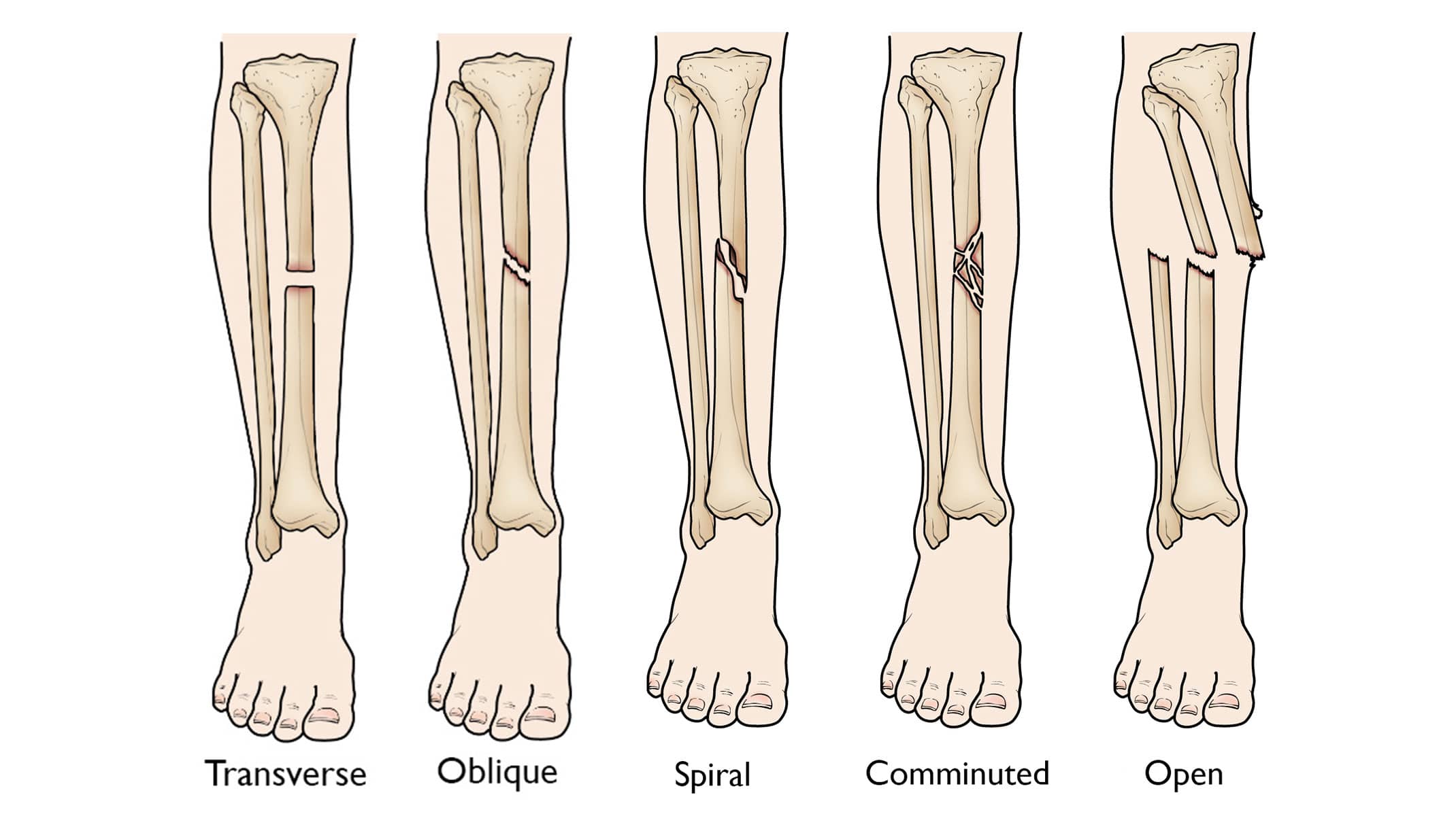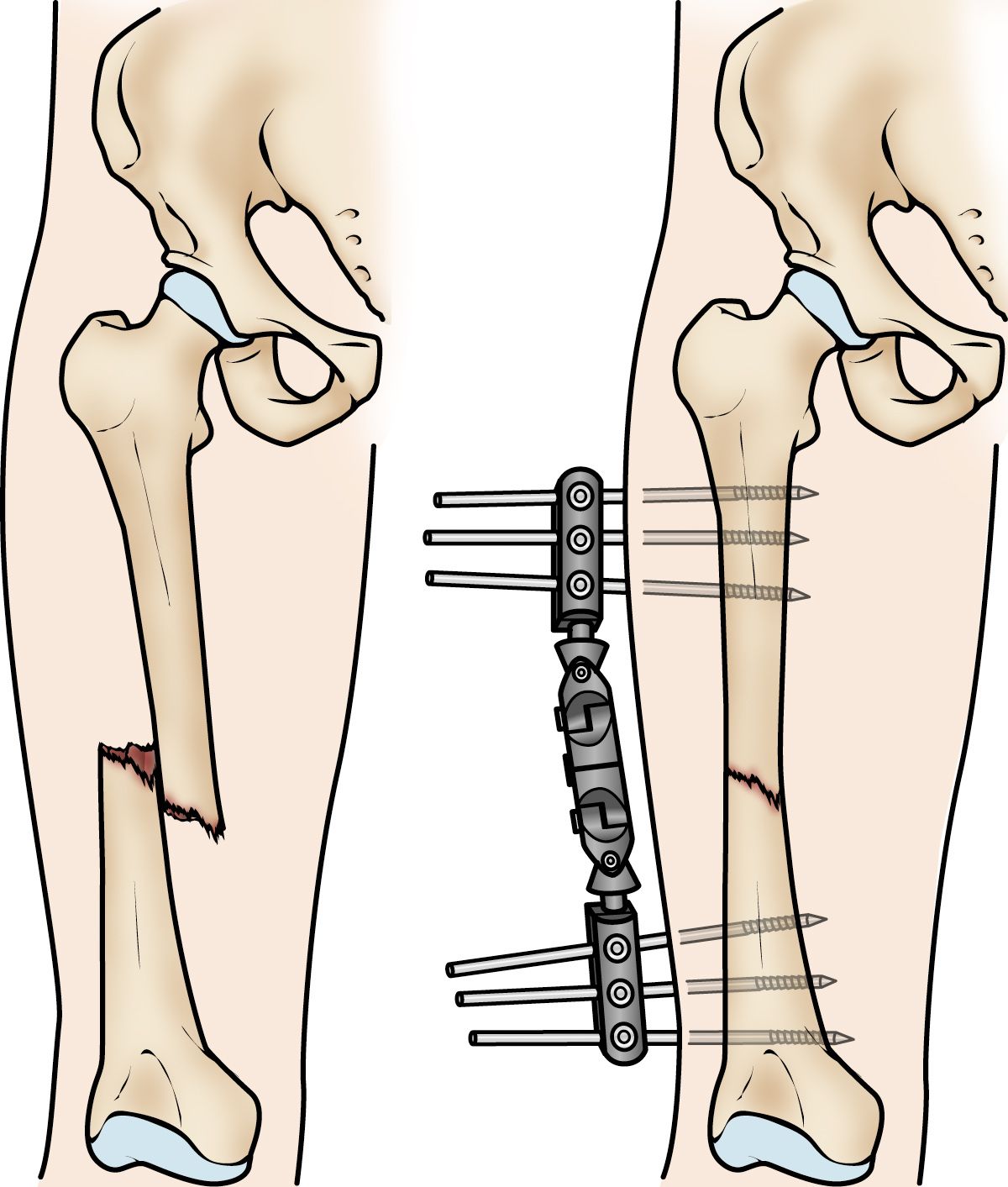Diseases & Conditions
Fractures (Broken Bones)
A fracture is a broken bone, the same as a crack or a break. Doctors use the words "break" and "fracture" interchangeably. A bone may be completely fractured or partially fractured in any number of ways (crosswise, lengthwise, in multiple pieces).
Types of Fractures
Although bones are rigid, they do bend, or give, somewhat when an outside force is applied. However, if the force is too great, bones will break, just as a plastic ruler breaks when it is bent too far.
The severity of a fracture usually depends on the force that caused the break. If the bone's breaking point has been exceeded only slightly, the bone may crack rather than break all the way through. If the force is extreme, such as that caused by an automobile crash or gunshot, the bone may shatter.
If the bone breaks in such a way that bone fragments stick out through the skin, or a wound penetrates down to the broken bone, the fracture is called an open fracture. This type of fracture is particularly serious because once the skin is broken, infection in both the wound and the bone can occur.
Common types of fractures include:
- Stable fracture, also called a non-displaced fracture. The broken ends of the bone line up and are barely out of place.
- Open (compound) fracture. The skin may be pierced by the bone or by a blow that breaks the skin at the time of the fracture. The bone may or may not be visible in the wound.
- Transverse fracture. This type of fracture has a horizontal fracture line.
- Oblique fracture. This type of fracture has an angled pattern.
- Comminuted fracture. In this type of fracture, the bone shatters into three or more pieces.
Cause
The most common causes of fractures are:
- Trauma. A fall, motor vehicle accident, or tackle during a football game can all result in fractures.
- Osteoporosis. This disorder weakens bones and makes them more likely to break with even a minor fall or injury.
- Overuse. Repetitive motion can tire muscles and place more force on bone. This can result in stress fractures. Stress fractures are a result of too much force on a bone that is not strong enough to withstand those forces. They are common in athletes who do repetitive, high-impact sports.
Symptoms
Many fractures are very painful and may prevent you from moving the injured area. Other common symptoms include:
- Swelling and tenderness around the injury
- Bruising
- Deformity — a limb may look out of place, or a part of the bone may puncture through the skin
Doctor Examination
Your doctor will do a careful examination to assess your overall condition, as well as the extent of the injury. They will talk with you about how the injury occurred, your symptoms, and your medical history.
The most common way to evaluate a fracture is with X-rays, which provide clear images of bone. Your doctor will likely use an X-ray to verify the diagnosis. X-rays can show whether a bone is intact or broken. They can also show the type of fracture and exactly where it is located within the bone.
Treatment
Cast Immobilization
A plaster or fiberglass cast is the most common type of fracture treatment, because many broken bones can heal successfully once they have been repositioned and a cast has been applied to keep the broken ends in proper position while they heal.
Functional Cast or Brace
The cast or brace allows limited or controlled movement of nearby joints. This treatment is desirable for some, but not all, fractures.
Traction
Traction is usually used to align a bone or bones by a gentle, steady pulling action.
- It is typically used as a temporary measure while you wait for surgery.
- It is not typically the final treatment that is used to fix the problem.
External Fixation
In this type of operation, the doctor places metal pins or screws into the broken bone above and below the fracture site. The pins or screws are connected to a metal bar outside the skin. This device is a stabilizing frame that holds the bones in the proper position while they heal.
- In cases where the skin and other soft tissues around the fracture are badly damaged, an external fixator may be applied until you can tolerate surgery.
- In other cases, an external fixator may be the definitive treatment, meaning it is the best treatment to fix the problem and not a bridge to surgery.
Open Reduction and Internal Fixation
During this operation, the doctor first repositions (reduces) the bone fragments into their normal alignment and holds the bones together with special screws or by attaching metal plates to the outer surface of the bone. The fragments may also be held together by inserting rods down through the center of the bone.
Learn more: Internal Fixation for Fractures
Recovery
The amount of time a fracture takes to heal varies and is based on:
- The extent of the injury
- The location of injury
- Your age
- Other medical issues
- How well you follow your doctor's advice
Some fractures — for example, in the fingers — take 3 to 4 weeks to heal. Others may take 6 to 8 weeks, several months (3 to 6 months on average), or even longer to heal.
Pain usually stops long before the fracture is solid enough to handle the stresses of normal activity. There are some fractures that are notorious for being difficult to heal or that may take a long time to heal. Your doctor will talk to you about your specific situation.
Even after your cast or brace is removed, you may need to continue limiting your movement until the bone is solid enough for normal activity.
During your recovery you will likely lose muscle strength and range of motion in the injured area. Specific exercises will help you restore normal muscle strength, joint motion, and flexibility.
Prevention
Proper diet and exercise may help prevent some fractures. A diet rich in calcium and Vitamin D will promote bone strength.
Weightbearing exercise (strength training) also helps keep bones strong.
Learn more: Exercise and Bone Health
Smoking and alcohol use are not good for your bones. They may weaken your bones and make it more likely for you to have a fracture.
Learn more: Smoking and Musculoskeletal Health
Contributed and/or Updated by
Peer-Reviewed by
AAOS does not endorse any treatments, procedures, products, or physicians referenced herein. This information is provided as an educational service and is not intended to serve as medical advice. Anyone seeking specific orthopaedic advice or assistance should consult his or her orthopaedic surgeon, or locate one in your area through the AAOS Find an Orthopaedist program on this website.











